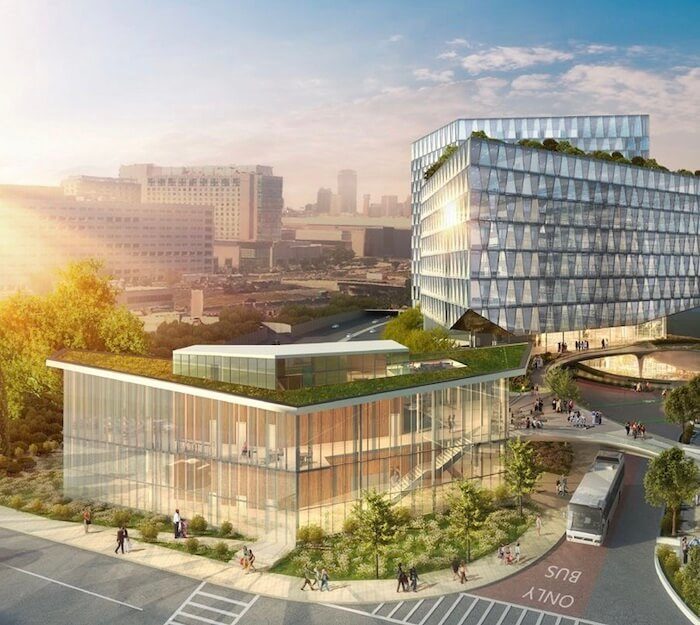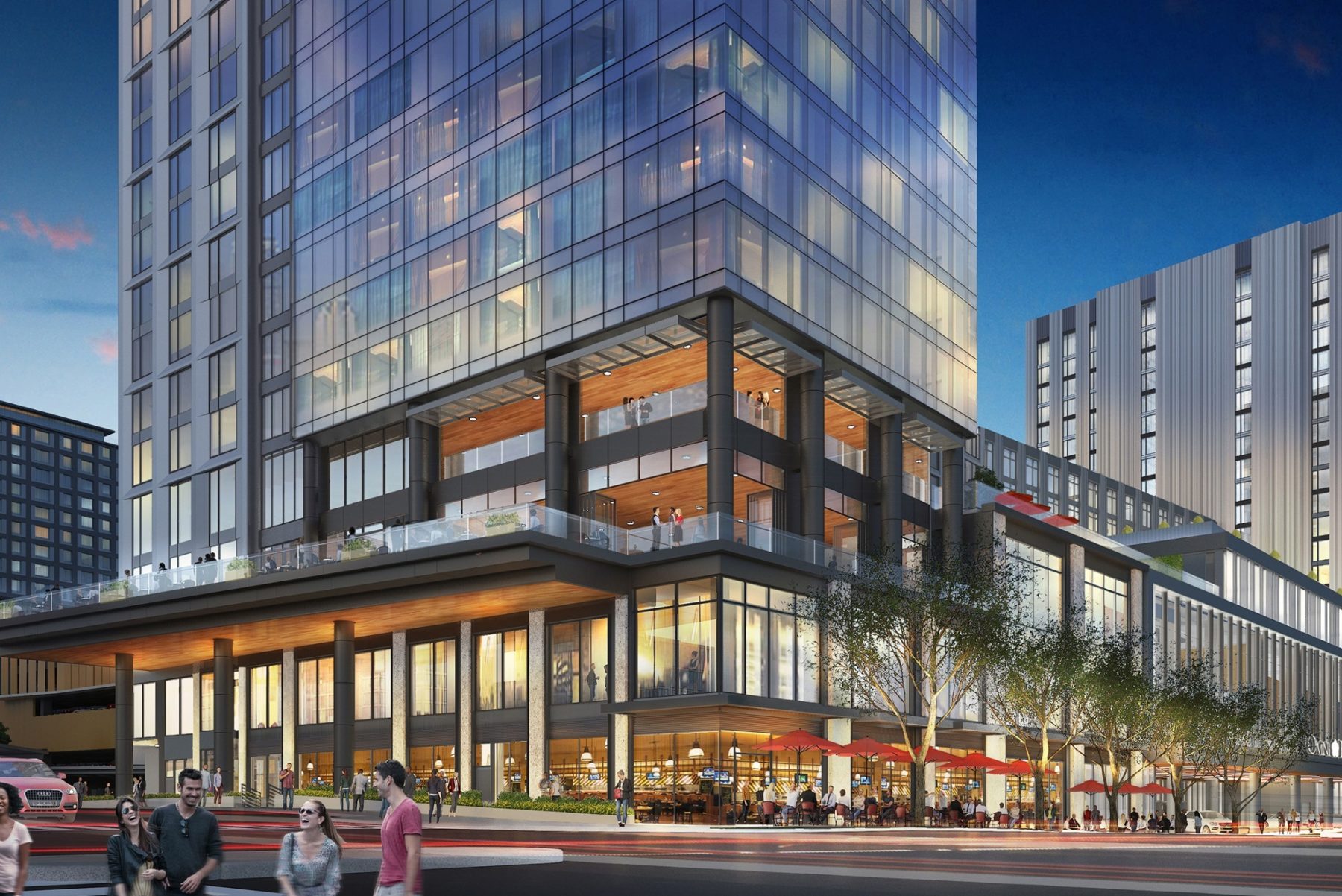Scott Mandeville AIA

Director of Operations, Moody Nolan, Boston Office
Moody Nolan was the recipient of the 2021 Architecture Firm Award from the American Institute of Architects (AIA).
Degree:
B. Arch Syracuse University
Professional Interests:
Sustainability, Resiliency, Equity, Urban Design
When did you first become interested in architecture as a possible career?
As a child I was always building...forts in the woods with my cousins, everything Lego, massive bases for my action figures out of old cardboard boxes. I always wanted to create the things I imagined, especially when they were too expensive to buy or didn't yet exist.
How do (or how did) you explain to your parents what you do for a living?
Growing up around many relatives in the building trades, it wasn't a great leap. My father can build anything. He can't read a set of plans to save his life but if I tell him what I need, he has an uncanny ability to visualize it in his head and make it real. My mother has an incredible artistic passion for creating as well. From sewing and crafting to painting and drawing, she loves to make the world around her beautiful. Many parts of my childhood contributed to the work that I do today, and thankfully I can read a set of plans.
What is your favorite Boston-area building or structure?
Christian Science Plaza. In the middle of the city is this place of relative quiet and reflection in the brutalist style that has the most incredible collection of other architectural styles visible from one place. From Horticulture Hall, and the Christian Science Church, to the Prudential Complex and One Dalton Place. The plaza functions like an open air museum of architectural history.
What has been your most proud moment as an architect/designer?
The first thing I was truly allowed to conceptualize and design all on my own was the reception desk for the MIT Museum on Massachusetts Ave. When my wife and I were first dating I took her there and got to walk her through the space. Being able to point to that one small piece of the project that I had really taken on myself gave me so much pride. We are often part of a large team, working together to complete a project. It's always a joy to see that detail you struggled with, or the idea you came up with finished and built. It becomes a part of the environment that you have a really intimate relationship with that no one else in the world understands in the same way.

What do you hope to contribute from your work?
Shaping our built environment to better respond to support and enhance our natural environment. The buildings that we spend so much time in every day should feel more like an extension of our natural world, not something sterile and separate.
If you could collaborate with anyone in the profession, who would it be and why?
“You don't have to move out of your neighborhood to live in a better one” — Majora Carter.
I heard Majora Carter speak at an event for The Community Builders a few years back. Her message struck at the very heart of some of the failings in Urban Design and the challenges that communities face. Getting a chance to work with her and incorporate her passions on a project would be really inspiring.
What does equity mean to you?
Getting to a point where we don't need to talk about equity anymore. Equity means having men and women of all races, genders, orientations, and backgrounds represented at every level. When the shortcomings we've inherited from our ancestors are no longer reflected in the socio-economics of our children, and everyone has equal footing and an equal voice.
What do you see as the largest barrier to equity in your profession?
Access and representation. Young children need to see themselves in the profession, be mentored, and taught about architecture and design. They need to have role models that they can identify with. We have a lot of really talented people in the field, but they are still underrepresented. In my role with Moody Nolan, I have an opportunity make a direct impact on that representation. We are diverse by design and intentional about creating opportunities for women, minorities and other underrepresented groups. We also need to work on access. It's becoming increasingly difficult for a small firm to break into the profession, and gain the experience needed to grow. Although many speak about encouraging better participation by MBE/WBE and small firms, we all need to work on building capacity in the industry and pushing the boundaries. Meeting minimum diversity goals and standards aren't enough. Many are told they don't have the experience to do a job, but aren't given an opportunity because there is a perception that it's a risk, or they are included but not allowed to participate as an equal partner.

What is the most effective step you’ve taken in your work toward a more sustainable built environment?
Doing an initial energy modeling assessment of buildings based on early massing to inform the ideal size and shape of a structure on it's site before getting caught up in grandiose designs. The potential to reduce a building's carbon footprint and energy demands can be drastically different based on it's orientation. Ideally we try to include this exercise on every project.
What do you see as the largest barrier to a zero-waste building, city, and world?
Cost is always going to be the biggest barrier. We need to work on educating everyone from the top down on the real cost of our decisions, and more importantly the real value of alternatives. The cheaper option which, in fact, has a much bigger environmental footprint needs to be eliminated and we need to use larger life cycle models to evaluate and illustrate the real cost of not taking bigger steps toward a more sustainable and resilient future.
How has design improved your daily life?
By reminding me that I don't need to settle for mass produced consumerism, especially in my own home. When I couldn't find the right shaped table to fit in the narrow space of my kitchen I decided to design and build my own. When I needed cabinets that were abnormally tall and shallow for another area I did the same. I love knowing that I can shape my world in any way I desire and I don't need to rely on someone else to create it for me.
What are you reading right now?
The Sun Also Rises by Ernest Hemingway-paper copy, and A Short History of Nearly Everything by Bill Bryson-Audio Book.
What was your least favorite college class?
Structures was a difficult class for me. Our professor had a thick Russian accent, and moved through formulas very quickly. I always got lost on the concepts while trying to write down everything he said to review later.
If you could redesign anything, what would it be?
My college thesis. I had too many ideas that I was trying to wrap my head around at once, and admittedly very little understanding of actual building systems. I think it would be fun to revisit the concepts and apply a new perspective on it.
What would you like to see change about Boston’s built environment?
I'd like to see more effort to create outdoor spaces for food and drinks. We've got some tough weather for a large part of the year, but if anything, the pandemic has shown us all that we can be more creative about enjoying outdoor space year-round.

